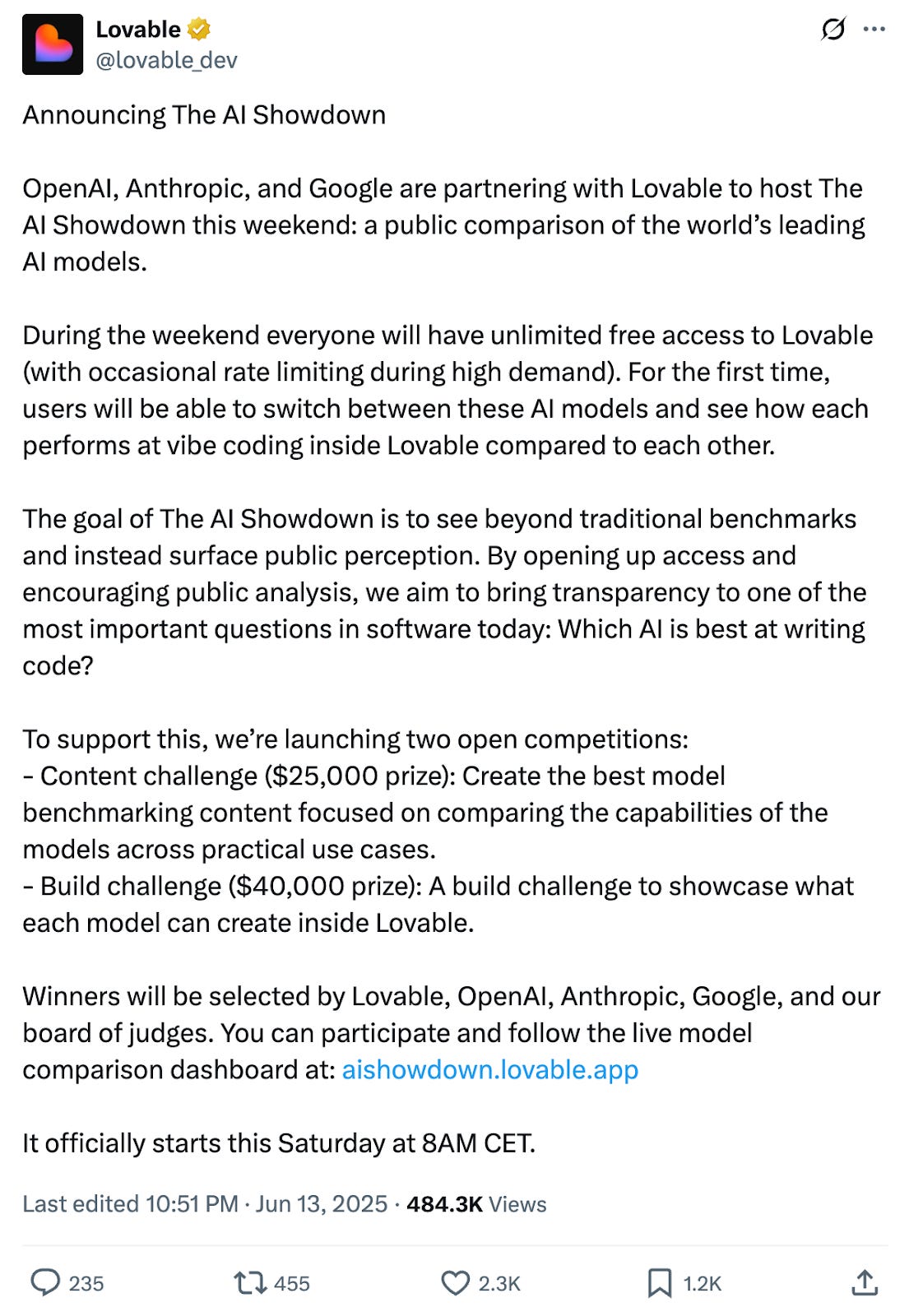Steal these tactics from Lovable
How Lovable drives usage, referrals, and community at scale
👋 Hey, I’m George Chasiotis. Welcome to GrowthWaves, your weekly dose of B2B growth insights—featuring powerful case studies, emerging trends, and unconventional strategies you won’t find anywhere else.
This GrowthWaves note is brought to you by Restartt.
Most CEOs want to create content. Few actually do.
Not because they don’t have something to say, because they don’t have a system.
We’re running a workshop to fix that.
This is for busy founders who want to show up on LinkedIn but don’t know where to start (or how to keep going). We’ll walk you through:
The exact workflow we use to turn raw ideas into sharp posts
A proven framework for defining your content pillars and schedule
How to use AI to support your voice, not replace it
No fluff. Just what works, based on a real founder-led strategy.
Date: Thu Jul 24, 2025
Time: 4:00 PM GMT+1
Duration: 1 hour
Cost: Free
If you’re the face of your brand (or want to be), this will help.
See you there.
There’s a company called Lovable.
You’ve probably heard of them.
You may have used their product to “vibe code” or whatever the term is this week.
AI buzz aside, they’ve been doing some interesting work on the growth side.
I’ll share three tactics with you.
Use them if they fit your situation and needs.
Ignore them if they don’t.
Tactic #1: The AI Showdown
On June 13th, Lovable announced a weekend project called ‘The AI Showdown.’

Essentially, Lovable:
Partnered up with leading foundation models from companies like Anthropic
Offered free access to their users and the ability to switch between different models
Launched two competitions to spark interest in the event and prompt people (no pun intended) to build with Lovable
Here are the results:



